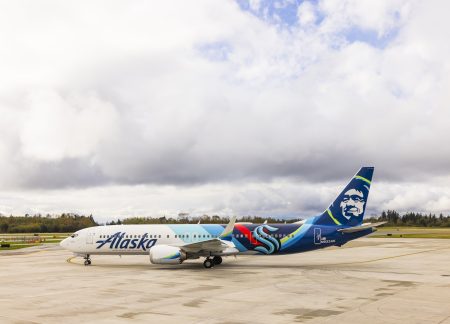Tech Week in Review: AWS Outage Disrupts Global Services and Industry Developments
In a week dominated by technology disruptions, the recent Amazon Web Services (AWS) outage served as a stark reminder of our digital infrastructure’s vulnerability and interconnectedness. The outage, which began Monday, wasn’t caused by hardware failure or cyberattack as initially speculated, but rather by what Amazon described as “a rare software bug in one of the company’s most critical systems” that triggered a complex, cascading failure throughout their network. This technical hiccup didn’t just affect Amazon’s cloud customers—it significantly impacted Amazon’s own e-commerce operations, resulting in unusual delivery delays across their platforms. The widespread disruption highlighted what experts are calling a dangerous “tech monoculture,” where too many essential services rely on a single provider without adequate redundancy measures, creating a potential single point of failure for much of the internet ecosystem.
The real-world consequences of the outage extended far beyond inconvenient website downtimes, disrupting critical infrastructure and daily life for millions. At Seattle-Tacoma International Airport, travelers faced extraordinary chaos with snaking lines throughout concourses and mountains of luggage accumulating in the baggage claim areas as automated systems failed. Major platforms including Facebook, Snapchat, Fortnite, and Coinbase experienced significant disruptions, rendering services either completely unavailable or severely limited for users worldwide. The incident has sparked renewed discussions among industry leaders and government officials about digital resilience, with Seattle Mayor Bruce Harrell commenting on the delicate balance city leaders must maintain—supporting tech corporations that bolster the local economy while addressing the ripple effects these companies have on housing, transportation, and community infrastructure.
As Amazon works to fully recover from the outage, the company continues pushing forward with innovation announcements, including the development of AI-powered augmented reality glasses designed specifically for delivery drivers. These advanced wearables aim to provide hands-free navigation, package scanning, and proof-of-delivery tools that could potentially revolutionize logistics operations. This juxtaposition of infrastructure vulnerability alongside ambitious technological advancement characterizes the current state of the tech industry—simultaneously pushing boundaries while sometimes struggling with the foundation supporting these innovations. Industry analysts note that such developments represent Amazon’s continued investment in last-mile delivery optimization, which remains crucial to maintaining competitive advantage in e-commerce despite the recent cloud disruptions.
Microsoft made headlines this week as well, with CEO Satya Nadella’s compensation package increasing by nearly 22% to an impressive $96.5 million, primarily driven by the company’s surging stock price. This substantial executive compensation reflects the continued growth and market dominance of Microsoft, which has successfully pivoted toward cloud services and AI integration across its product portfolio. Under Nadella’s leadership, Microsoft has maintained strong momentum even as competitors face various challenges, reinforcing the company’s position as one of the most valuable enterprises globally. The compensation disclosure comes amid broader industry discussions about executive pay, corporate responsibility, and the growing wealth gap between tech leadership and average workers.
In startup news, Carbon Robotics founder and CEO Paul Mikesell teased a new machine that reportedly “will blow your mind,” built upon the same AI system used in the company’s existing equipment. This development highlights the continuing innovation in agricultural technology and automation, with Carbon Robotics being among the leaders in applying advanced AI to traditional industries. Meanwhile, entrepreneur Tim Chen shared his journey of persistence after being rejected by multiple Seattle venture capital firms six years ago—a story of determination that resonates with many startup founders facing initial skepticism before achieving success. Chen’s experience illustrates both the challenges and opportunities within the regional tech ecosystem, especially for entrepreneurs from non-traditional backgrounds.
As the tech industry processes this week’s disruptions and developments, broader questions about digital resilience, infrastructure redundancy, and technological dependency loom large. The AWS outage serves as a powerful warning about the fragility of our increasingly connected systems and the need for more robust fail-safes across critical services. While companies continue to push innovation boundaries with AI, augmented reality, robotics, and other cutting-edge technologies, the events of this week demonstrate that even the most advanced organizations remain vulnerable to fundamental technical failures. For everyday users, businesses, and governments alike, finding the right balance between embracing technological advancement and ensuring system reliability remains a crucial challenge—one that will likely dominate industry discussions in the weeks and months to come as lessons are extracted from this significant disruption.















